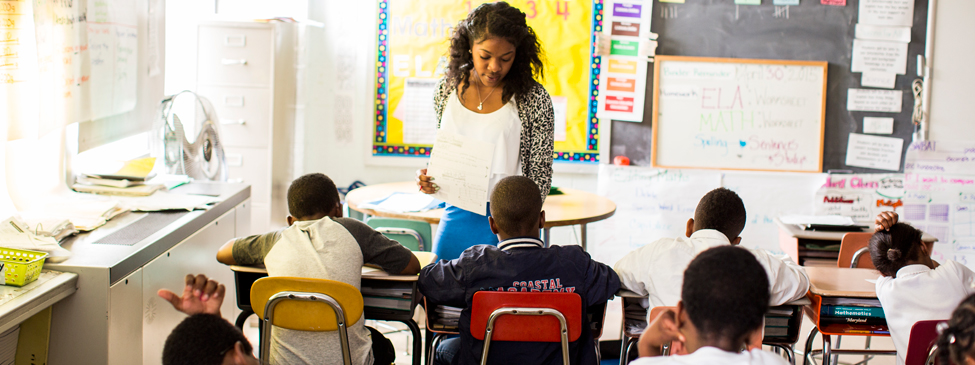At TNTP, our focus tends to be on instructional quality: how to get the best teaching for students who need it most. Makes sense. But this assumes you’ve got students and teachers in classrooms in the first place. Instructional time—simply being there—is a huge factor in how much students learn. And the unfortunate reality is that time, like great teaching, is not distributed equally to all kids: including extracurricular learning opportunities, low-income students experience an average of 6,000 fewer hours of learning time by sixth grade than their more affluent peers.
This fall, the Department of Education proposed a cap on standardized testing that would limit it to two percent of instructional time. We can quibble about that particular number, but we agree that schools and districts should be getting rid of duplicative or ineffective tests—the kind that waste students’ and teachers’ time.
But over-testing is only one of many offenders when it comes to lost learning time (and it’s the only one that also has instructional benefits, when done right). There are several other issues we have to address if we’re going to make sure kids actually reap the benefits of great teaching. Here are a few places to start:
Make sure kids get to school. President Obama recently launched an initiative to combat chronic absenteeism for the estimated 5 to 7.5 million students who miss 10 percent or more of the school year. Lower attendance rates of poor and minority students in early grades are a major driver of the achievement gap. One thing we can do about this is collect better data: right now, we don’t even have a standard definition of truancy, nor does our data on student attendance help us identify students at-risk of chronic absenteeism. Right now, only 17 states report publicly on chronic absence rates. That’s set to change, fortunately. The Every Student Succeeds Act will require states to report chronic absenteeism in Title I schools, broken down by subgroup. Smart family engagement is another critical next step: DC Public Schools found that students who receive a home visit from their teacher are considerably less likely to miss school.
Cover teacher absences with real learning. Like all professionals, teachers need days off. Many districts have ample paid time off for teachers—some contracts allow as many as 25 personal/sick days per year, and about 15 percent of teachers take almost a month’s worth of school off each year (in addition to holidays and summer vacation). But the problem is not sick days; no one wants teachers to report to work when they’re under the weather, or to lose pay because they’re sick. Still, reducing teacher absenteeism through incentives (e.g. pay for unused sick days) and replacing teachers who are chronically absent without a legitimate excuse will benefit students significantly.
Beyond that, even if teacher absences are at a minimum, when teachers are out we have no quality options to keep the through-line of student learning. To be a substitute teacher requires few to no qualifications (many districts don’t even require subs to have a bachelor’s degree) and pays very little. For maternity and other long-term leaves, convoluted state laws often disallow stable long-term subs. No matter how you look at it, a day with an absent teacher is, in the words of education researcher Marguerite Roza, “a lost day for most kids.” Technology should provide a new path forward here: some schools are already experimenting with using virtual learning to ensure students don’t miss out on content when their teacher is out.
Fix class schedules. In November, California settled a class action suit filed by students across the state who were missing days, weeks, or even months of schooling as they waited for their course schedules, or were assigned to “courses without academic content”—meaning they were either left to do administrative work or simply released from school early. Every student deserves to start the school year with a class schedule in hand—and not full of zero-content study halls, either.
Lengthen the school day and year. The most obvious way to increase instructional time is to increase students’ time in school. Plenty of schools have already done so, but the reality remains that since A Nation at Risk called for a minimum 200-day school year back in 1983, the average school year in America has remained three to four weeks shy of that. Even if extending the year isn’t feasible, some schools have added the equivalent of four weeks’ more instructional time per year just by lengthening the school day.
These are just some of the issues keeping students and teachers apart—especially in poor and minority communities, and I don’t mean to suggest these are quick fixes. But I’d wager that districts could make significant progress on some of these things at the same time as we’re working on how to improve instruction at scale. So while we’re limiting over-testing, let’s look for other ways to solve some inexcusable causes of lost learning time.


